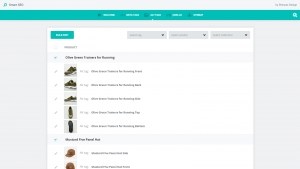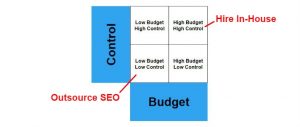In my business, we consult with many interesting organizations—ranging from well-known, publically-traded companies to professional service firms, non-profits, and media giants. There are many lines of inquiry thrown around during a consulting session. Consider these:
- How do we evaluate performance properly?
- How do we handle an underperforming employee?
- How do we reel in a top performer who isn’t working well with others?
- How can we make sure there are opportunities for all employees?
The list goes on, and there isn’t a one-size-fits-all answer to these questions. While that might vary, there are common themes that tend to be present if these questions are being asked in the first place. Namely…overall business goals aren’t being achieved; values aren’t aligned with measures of success; legal issues may be looming; it’s getting harder to attract top talent; and someone believes that performance management begins—and ends—with an annual review.
Annual reviews date back to the 1930s when a Harvard Business School professor, Elton Mayo, studied behavior at a Western Electric Factory. He found that happiness and productivity were related to social structure at the workplace—and the concept of managing or mentoring someone was born. Twenty years later, in 1950, performance reviews became enshrined in law when the Performance Rating Act was passed, which required an annual review for federal employees. These reviews became grades that impacted salaries and bonuses. Organizations too often take a knee-jerk approach when managing the performance of their employees and when developing an organizational strategy that oversees this work. It’s too common to address it when there is a problem—a reactionary approach—as opposed to implementing a proactive strategy as part of standard operating procedures.
There are reasons for this and it’s usually because of workplace changes that have taken place. Companies simply don’t look the same way that they did 30+ years ago and new groups of people are taking on roles that had been filled by the old guard. It’s not business as usual anymore.
Cultural Bell Curves
For too long, performance management has been seen as this stand-alone concept that is used for managing certain employee groups. An organization usually has a strategy that targets the non-performers, the ones that are at the tail end of the bell curve—these are the employees who need an improvement plan. On the opposite end of the curve are the high performers. This group has high potential for career growth, and most organizations do everything in their power to make sure the members of this group stay happy and satisfied with their jobs.
But what about the employees who fall in the middle of the curve?
That answer is easy. Usually, it’s this group that receives little to no attention and suffers from a lack of opportunities, even though their numbers are greatest. This form of neglect is telling.
When you look at the makeup of a company’s performance management system, you can usually get a clear understanding of the values and culture of that organization. When there is a disconnect in the performance management system, or when this particular function is considered by the leadership team as something that the HR department should just be handling, it is set up to fail. Integration and synergy are needed, and the mindset that performance management only pertains to the high or low achievers of the company should probably be filed under “policies of the past.”
Performance management is an integral part of the overall business strategy. It’s a business-got-to-have and should identify an organization’s core behaviors, align a strategy, and promote targeted outcomes. Effective performance management should also challenge leaders to modify their own thought patterns, set up employees for success, and communicate the overall values of the organization while clearly exhibiting what exactly defines accomplishment.
Employees Want to Contribute—and Benefit
This is a concept that is frequently overlooked by leadership teams. There is this misconception where the people in charge believe they alone are invested in the future of the company and everyone else is simply a cog in a wheel. When I encounter this particular mindset, I can’t resist the urge to shake my head because the reality is so completely different.
Employees want to contribute to their companies positively and surveys generally go on to reveal that employees wish to be a part of business success while doing well personally, in the process. A win for the company, then, is a win for the employee—and vice versa.
But when the leadership team operates with the belief that they are the only ones with skin in the game, a trickle-down effect occurs that impacts each level of the organization. Employees are less inclined to give it their all because it is only the executive team that is receiving the benefits. Leadership should encourage an environment where they share their vision and inspire staff to push forward—and are rewarded based on specific metrics. A clear, concise compensation and rewards system that includes financial benefits, public acknowledgments, merit awards, promotions, greater work responsibilities, and learning and study opportunities should be developed, communicated, and constantly put at the forefront along with ongoing motivation building programs that promote a sense of excitement and energy.
Diversity Management is Performance Management
Diversity is not just about demographics, but also informational differences, education, experience, values, and goals. Therefore, managing diversity is also a component of performance management—these two functions work simultaneously with each other and do not run parallel within an organization.
It’s true that company operations are usually focused on the collective—where the goal posts are located and the process that is used for getting the company to that marker. I have discovered that bearing down on a collective mindset from the top-levels might be one of the primary reasons why diversity management isn’t implemented correctly or why it might fail. Having a diversity management program in place at an organization means successfully promoting individuality and acknowledging that every person can bring something unique to the table in the pursuit of overall goals. An organization that does diversity management well aims to harness a talent pool that is comprised of people with unique backgrounds, opinions, and skill sets.
Practical Advantages to Strategic and Diverse Performance Management
Implementing a sound performance management plan that is applied from the top down is one that focuses on all employee groups, is integrated with other people management processes and systems, promotes diversity, and values the individual. This plan allows many tangible benefits to be experienced by the company, the first coming in the form of available talent. If the organization believes in inclusion and is clear about what is celebrated, it becomes that much more attractive as a potential employer in the marketplace. A workplace that is open to exploring new ideas and welcoming new operational styles is appealing to many emerging employee groups—including the hyper-talent that is associated with the Millennial generation.
Likewise, having a performance management plan in place that supports diversity benefits the company from a cultural standpoint. An organization is better able to manage marketplace needs as specific demographics can be paired with clients of the same background, helping for increased comfort and a sense of affinity to be created.
And so, effective performance management can be so simple: Evaluate employees based on “what they bring or do,” rather than “who they are.”
What do you think? What are your thoughts on creating a performance management system that goes beyond an annual review?
Originally posted on jpkantor.com.
(166)
Report Post







